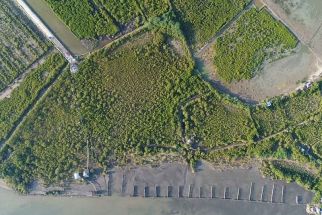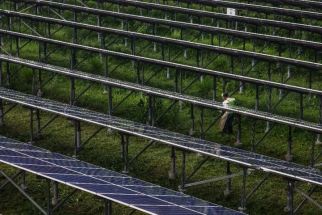Is Manila Bay losing its marine life due to land reclamation?
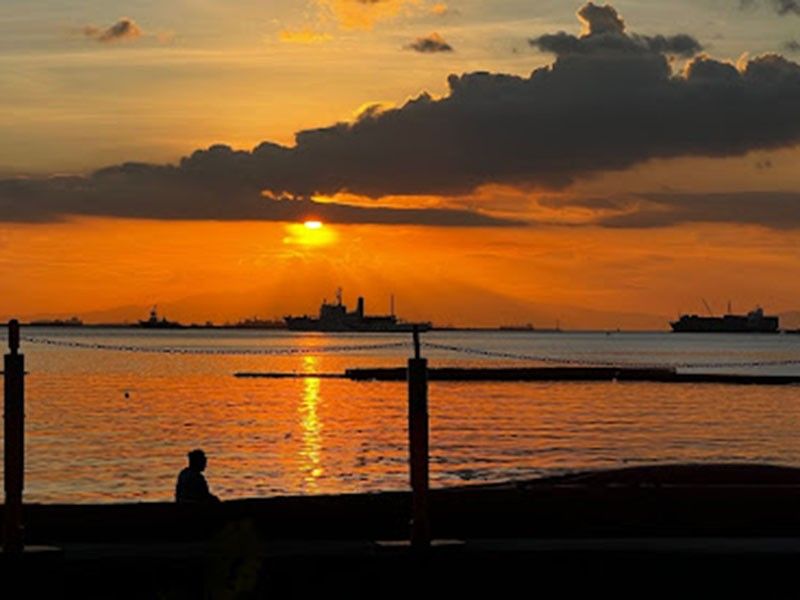
MANILA, Philippines — For four days, Roger Requinto, 44, waited for the crabs to return. Most of the time, he just stared at the water while sitting on the edge of his hut on stilts. Occasionally, he checked the nets.
Roger was one of Manila Bay’s few remaining fisherfolk in the coastal waters of Barangay Taliptip in Bulakan, Bulacan. He hoped that he would have enough crabs to sell, or just to feed his family. But the nets yielded only a crab or two.
"I used to catch a boat full of crabs and fish at the end of a day at the bay," Roger said in Filipino. "I would earn a thousand pesos a day, sometimes more, selling it. It was enough for my family to live on. Now, I can hardly catch anything."
Manila Bay is a 199,400-hectare body of water in Luzon island of the Philippines that has a coastline running from the coasts of Cavite province, to?Parañaque, Pasay, Manila, Malabon and Navotas in Metro Manila, to Bulacan, Pampanga, and Bataan provinces. It is also the site of historic events, while tourists and visitors often rave about the stunning Manila Bay sunset.
It is also the site of at least 23 land reclamation projects.
The fisheries industry accounts for 67% of the bay’s total value, said Oceana Philippines, a non-government organization working to protect the country’s oceans and other bodies of water.
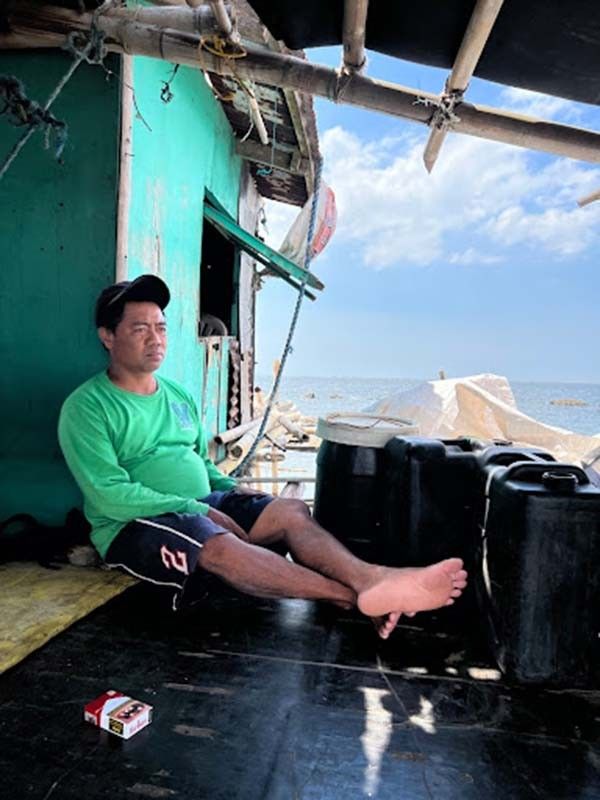
Fisherman Roger Requinto sits in his hut in stilts in the middle of Manila Bay, just a few meters away from San Miguel Corp.’s airport construction on reclaimed land.
Murky waters
For the past two years, Roger and his fellow fishermen have been noticing something different in the waters of Taliptip. "It slowly began to redden," he said. "We used to be able to see the bottom of the water when looking into it. Now it is murky."
Less than a kilometer away from his hut, heavy construction equipment pounds on a piece of land recently reclaimed from the bay. For two years, San Miguel Corp. (SMC) has been hard at work dumping and filling that part of Manila Bay across Taliptip to build what it said would be the biggest airport in the Philippines.
"Even before the construction, there was already pollution in Manila Bay. Probably from the factories (that dumped on the bay)," said Primitivo Cansiran, 52, who accompanied Roger for a day at the bay. "But now it is much worse."
SMC said the project would employ thousands of people, mostly among the families displaced from Taliptip. But Roger, Primitivo, and many others displaced by the construction remain without work. The company did pay off most of the affected fisherfolk in Taliptip and nearby Barangay Bambang to leave their fishponds and huts. But the money has quickly run out.
A few families, like that of Roger, were defiant. When the construction started, their huts were constantly bombarded with a pounding noise from the construction. "The noise haunted me. I could even hear the pounding in my sleep," Roger said.
"Only six families, including ours, did not accept the money to leave. We asked SMC to give us a house and lot, and a livelihood. They gave us a house and, for a while, some livelihood [assistance]," said fellow fisherman Teody Bacon, 48. "But the work, which was mushroom farming, did not last. We did not have enough money to sustain it."
So Teody and others continued to try to fish. When the construction began and SMC began cutting mangroves, the crab catch began dwindling.
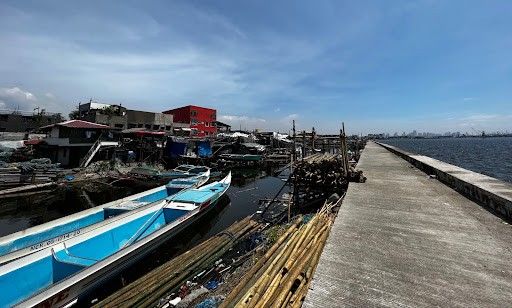
The community of fisherfolk in Barangay Sipac-Almacen, Navotas City, off northern Manila Bay’s coast.
Dwindling catch
Roger, Primitivo ,Teody and the Malolos fishermen were not alone in noticing the murky waters near the areas of northern Manila Bay that were being reclaimed.
Fisheries and marine scientist Jerwin Gallego Baure said that fisherfolk from nearby towns like those in Malolos, Bulacan saw this, too. When the dredging started in Taliptip, the coastal waters began to take on the color "of coffee", he said.
Fishermen from Navotas City, about 10 kilometers away from Taliptip, noticed it as well. They also described the waters as "mapula" (reddish). They, too, experienced a decrease in fish catch in the coastal waters of their city. Thousands of families also live near mussel farms in these waters along Navotas' coast.
"We began to see the effects (of the dredging). The water became red. Too red," said fisherman Isagani Perez Catiis, 60, from Barangay Sipac-Almacen in Navotas.
From one of many huts on stilts on the shore, Isagani looked blankly at the bay, pining for a time when they could freely catch fish or maintain mussel farms in the coastal waters. "We are now forbidden from fishing in many areas there. Everytime one of us gets near the area, they would approach us and demand that we turn back," he added.
"Each pond used to earn about P30,000 to P50,000 everyday from mussels. About six fishermen would divide the earnings among themselves," said Isagani.
In the coastal waters of Navotas, at least two land-and-fill projects are in the works. One, a 343-hectare project called Tanza Airport Support Services, will be located off the coast of Tanza, Navotas. It is also a project of San Miguel Corp., and will support the Bulacan airport.
Another reclamation project, right on the coastal waters where Isagani and many others fish, will be an expressway that connects the airport to Metro Manila. The local government of Navotas called the project "Navotas Coastal Development". It will reportedly include housing, and will be funded by San Miguel Corp. as well.
Most mussel farm owners affected by the reclamation projects have already agreed to accept payment to evacuate their ponds.
The shores of Barangay Sipac-Almacen are littered with remnants of the makeshift structures from the mussel farms. "San Miguel people would destroy (the mussel farms), cut down the bamboo and anahaw structures. Some of these (debris) would remain floating in the sea," Isagani said.
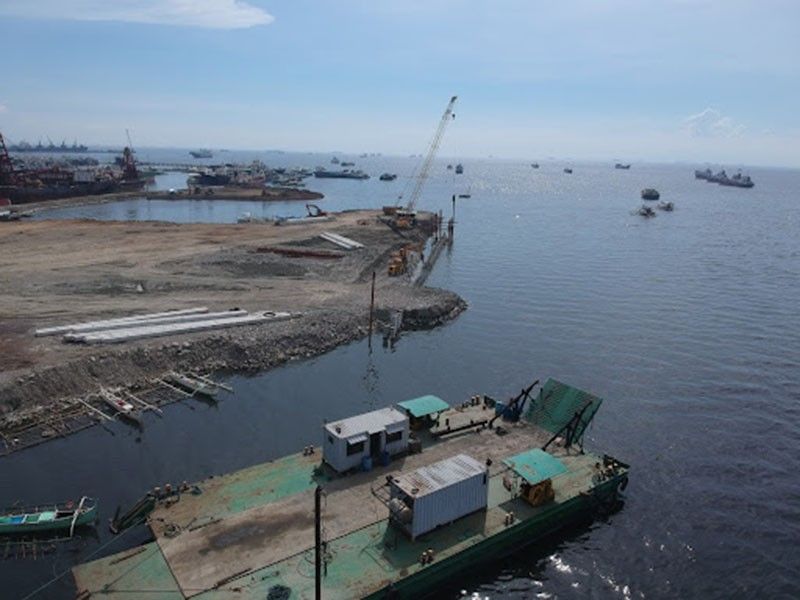
A part of Navotas City’s coast in Manila Bay that is being reclaimed.
Dire consequences
Scientists and experts have been near-unanimous in their assessment that land reclamation projects in Manila Bay will have dire environmental consequences for Metro Manila and nearby towns and cities.
Filipino geologist Kelvin Rodolfo, who is professor emeritus of Earth and Environmental Sciences at the University of Illinois, has been among the many experts sounding the alarm for years now.
His 2014 paper, titled "On the geological hazards that threaten existing and proposed reclamations of Manila Bay", remains the most cited study on the geological hazards of land reclamation projects in the bay.
"Three geological reasons make near-shore reclamation a very bad idea that poses lethal risks to many people: land subsidence, storm surges, and earthquake-induced enhanced ground shaking and liquefaction," Rodolfo said in his paper.
Marine experts, meanwhile, pointed to the destruction of the marine environment in Manila Bay as one of the irreversible adverse effects of the projects.
"What we have in Bulacan and Navotas are estuarine (semi-enclosed coastal bodies of water) environments, composed of mangroves and mudflats. They were later converted to fishponds but are still (considered part of) the estuarine ecosystem," explained Baure, who is a member of the scientists’ advocacy group Agham.
The mangroves protect the fishes and other marine life, he added. When SMC began cutting mangroves, the fishes began to migrate elsewhere.
"With land reclamation, the mangrove forests will disappear, as well as the shallow marine environment where the fishes and other marine life live. We also stand to lose the services that these marine ecosystems provide us," said geologist Narod Eco, a former researcher for the University of the Philippines’ National Institute of Geological Sciences and also a member of Agham.
Eco added that mangroves also have very important roles in the fight against climate change. Mangroves, he said, are carbon sinks, meaning that they absorb more carbon from the atmosphere than they release.
Rodolfo and the other experts are also convinced that the reclamation projects will worsen the rising sea levels in Bulacan and Metro Manila — especially in Navotas.
"Sea level rise in the area (of Manila Bay) is five times the global average," said environmental lawyer Gloria Estenzo Ramos, vice-president of Oceana Philippines.
"The fishermen know this. They have been saying this.They are not scientists, but they know the ocean, and they are the experts."
These findings have even been affirmed by National Economic and Development Authority (NEDA)’s Manila Bay Sustainable Development Master Plan (MBSDMP).
In December 2020, NEDA’s MBSDMP released its Policy Notes (Annex 14) on the NMIA project. It states, among others, that "Barangays Bambang and Taliptip are amongst the coastal barangay in the north of Manila Bay Area which are experiencing extreme coastal flooding due to sea level rise and land subsidence."
"The construction of the international airport and the creation of an ecozone in Manila Bay will further complicate the already stressed habitat and ecosystem of the area which is continuously hounded by unsustainable economic growth, land subsidence and sea level rise. Specifically, the introduction of new development around the area will potentially damage and affect its natural habitats and ecosystems; increase exposure of built-up areas and population to coastal flooding; and potentially create additional stress to current water supply," said the policy notes.
On his first day in office on June 30, 2022, Pres. Ferdinand Marcos Jr. vetoed House Bill No. 7575, which would have created the special economic zone and freeport near the international airport in Bulacan. But the airport’s construction continued unimpeded. The Palace was quick to clarify, however, that the president supports the project, the franchise for which has already been signed into law.
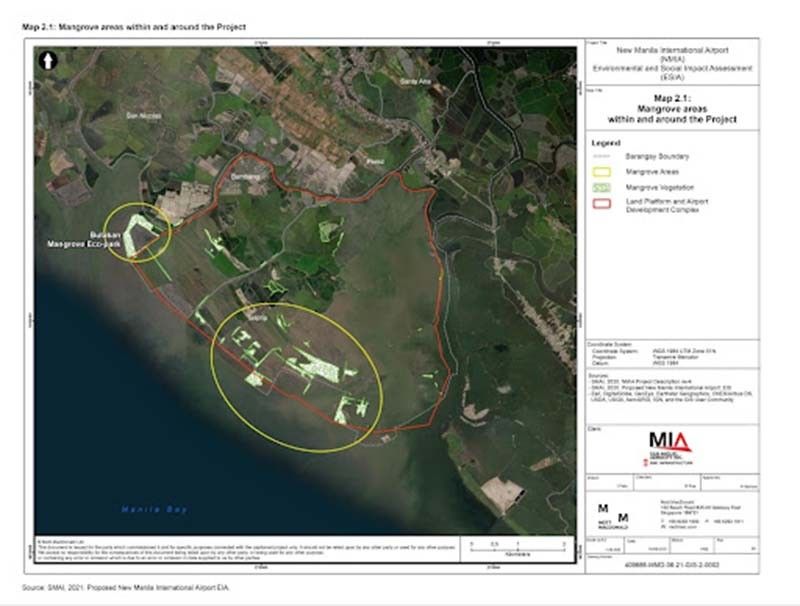
Location of mangroves in the area of the airport construction. Map from the Environmental and Social Impact Assessment report (Volume II - Scoping and Methodology) submitted by Mott Macdonald - Singapore to SMC. Accessed from SMC website on November 4, 2022.
Well-known impacts
Fishermen like Roger, Primitivo, Teody and Isagani have, indeed, themselves experienced the adverse effects of the projects. SMC and the Philippine government know these, too.
In April 2022, San Miguel Corp. came out with an Environmental and Social Impact Assessment (ESIA) report on the project. This was prepared by Mott Macdonald, an engineering consultancy group. The report details the various "potential E & S (environmental and social) impacts" of the project.
Among the impacts of the project are on biodiversity, social and socio-economics, hydrology, water and sediment quality, geology, seismicity and natural hazards, air quality, greenhouse gases, noise and vibration, and others.
Specifically, the report flagged construction activities like "major incidents causing spillages/leakage of dredged materials and hydrocarbon fuels", "Deterioration of ambient air quality (due to fugitive dust emissions and notably PM10) resulting from earthworks / land formation activities and operation of construction equipment", "GHG emissions (that) will principally occur through the use of materials, from the transport of those materials and waste to and from the site, and from the use of construction plant", among others, as having significant-to-major adverse social and environmental impact.
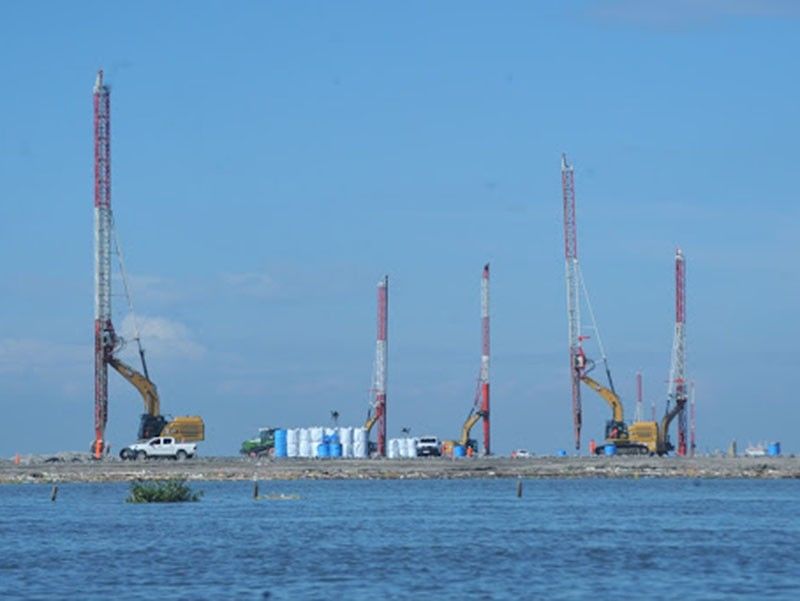
Pounding on the new land: San Miguel Corp.’s land reclamation operation in Taliptip.
To counter these negative impacts, the report proposed "mitigation and monitoring measures" during the different phases of the project. Among these measures are "induction and awareness training to all staff and workers covering site rules and information related to biodiversity", "establishing a community-based habitat protection and conservation program involving adjacent landowners/land users and overall community around the project site", and others.
The Taliptip fishermen said that as far as they can tell, no such measures have been implemented by SMC in their community.
"Some of us have tried to apply for jobs in (the airport) construction. But many still await results (of their application). They said the company has been swamped by applications," said Teody. "The company said it has job openings for drivers. But what do we know about driving? All we know is how to fish."
Roger said it will be even less likely that they will find work at the airport after it becomes operational in four to five years. So they will continue to try to fish — for as long as possible, even as the bay’s crabs and fishes have long gone.
--
(NOTE: On October 17, 2022, the reporter contacted San Miguel Corp. through email for an interview for this story. On October 21, 2022, the company’s customer care team replied to acknowledge receipt of the email, but did reply to the request.
On November 4, 2022, the reporter emailed again, following up on the request. SMC replied, saying that "(the) request is still being evaluated by SMC Infrastructure." SMC has not approved the request for an interview as of this writing.)
This story was supported by a grant from the Earth Journalism Network.
- Latest























